The question is how to efficiently find advantageous planets for colonization, locate your potential allies and enemies, and even, if you are lucky, discover the fabled Orion system. To acquire this information you have to send out ships and explore!
You always begin the game with three ships orbiting your home planet: a colony ship, a frigate, and a scout. These ships provide a limited capacity to begin exploration—the first step to expansion. Every ship has the ability to scan planets, detect other races, and discover what is “out there.”
Ship Movement
Before sending your ships out into the black, you need to know how to move them. The mouse controls for the main galactic screen are simple:
- Left Mouse Button – hold down to pan around the galaxy; click on a fleet to select it
- Wheel – zoom in and out of the galactic map
- Right Mouse Button – assign a destination for a fleet
To select a ship or fleet to move, left click on the fleet. The fleet window will appear, with all ships in that fleet displayed. If you want to move the entire fleet, you don’t need to do anything within the fleet screen. However, if you want to send only part of the fleet, left click in the fleet window on the ship or ships you want to move. Only selected ships will move while the rest stay behind. Once a fleet is selected, you can hover over a prospective destination to see how many turns the fleet would take to get there.

In the example below, the Colony Ship has already moved to explore a planet. The scout has been selected to explore on its own, leaving the frigate behind. The scout will take 3 turns to reach the selected destination.

Fleet Tracking
Zooming out will allow you to see where all of your fleets are. Clicking on them will display the fleet composition as well as allow you to move. The fleets of other races, if in detection range, will also be displayed (clicking on them will also show their fleet composition). You may also view all of your fleets, but not move them, by selecting your Fleet control button.
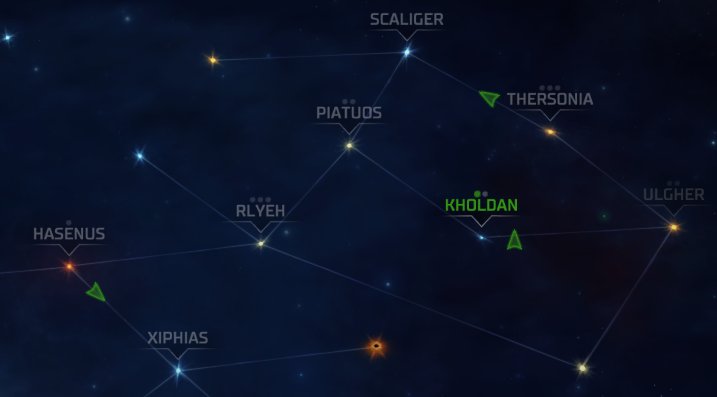
Discoveries
The galaxy contains many mysterious objects to be discovered to include:
Anomalies: These will appear as green, pulsating points in space. A ship can be sent to an anomaly. Once the ship reaches it, you will learn what the anomaly is and receive its benefits, which can include credits, advanced technologies, derelict ships, and more.
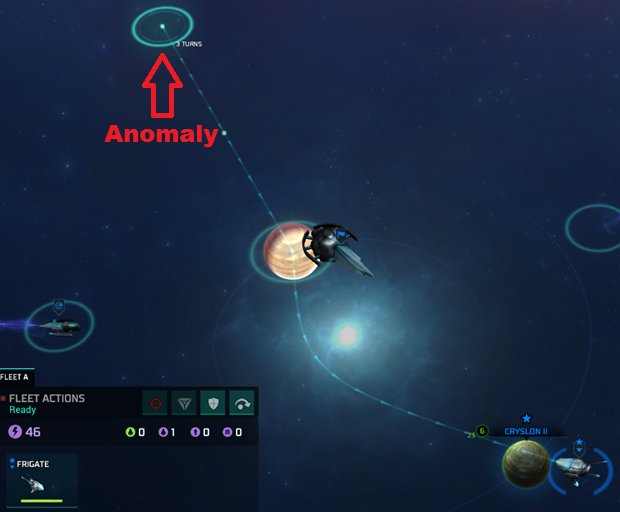
Black Holes: Black Holes are rare stellar phenomena. Each Black Hole links to another Black Hole within the galaxy. Ships moving through the Black Hole travel instantly to its counterpart. When selected for travel, the destination Black Hole will highlight. These phenomena can be of strategic importance, especially one located close to or within your empire!
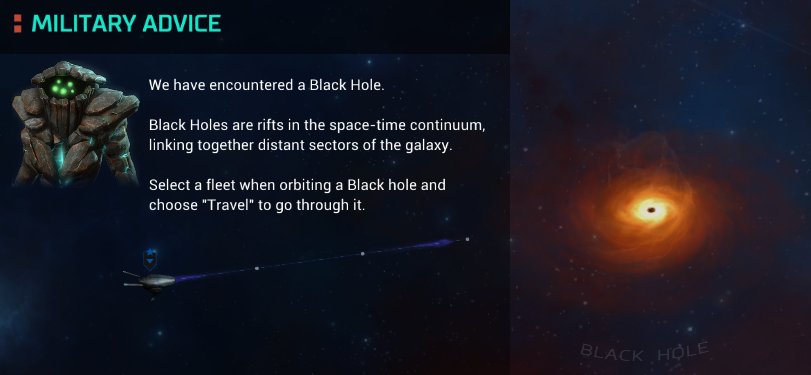
Electromagnetic Disturbances: As your ships approach a planetary system you will occasionally receive a notification that an electromagnetic disturbance has been detected. The planet where these disturbances are detected will be briefly highlighted. These can be one of two discoveries: an independent planet or a pirate enclave.
- Independent Planet: Once discovered, the race inhabiting an independent planet will be available in your Diplomatic screen. They will contact you occasionally with quests, can be given gifts of BC, etc. An independent planet that becomes an ally will provide your empire with a number of benefits. However, turning them into enemies may end up hurting your empire in the long run.

- Pirate Bases: Pirates, the scourge of space, establish bases in asteroid belts or on out-of-the way planets. If not destroyed they can grow in power, sending out more and stronger ships over time. Destruction of the base will often yield some small benefits.

Planetary Systems: In most cases you will find a planetary system at the end of a wormhole. From a distance you can readily see a planet’s relative size as well as any moons, but to receive more detailed information you will have to actually orbit the planet. Technology may exist to shorten this system exploration process.
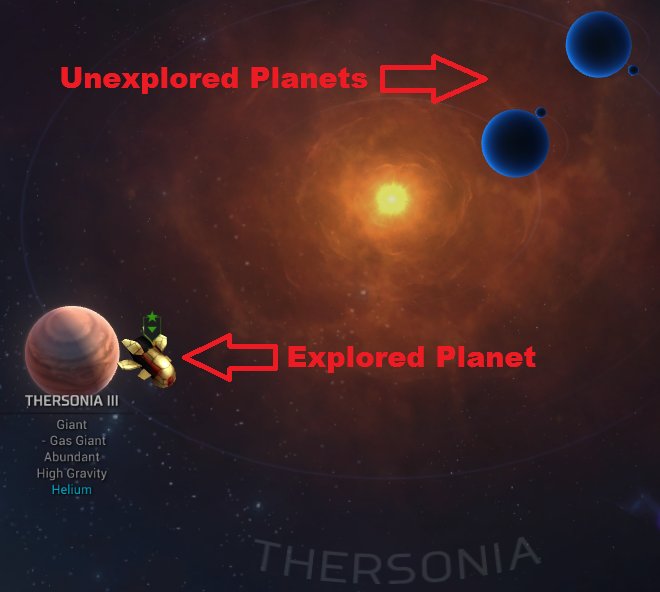
Space Monsters: Lurking in the deep black of space there exist strange, gigantic lifeforms with insatiable appetites. These space monsters come in a variety of forms and strengths. Moving in to take a closer look at one may be the last thing your crew does before being devoured. You must determine if approaching a planet orbited by a space monster is worth the risk to the ship or fleet sent against the creature.
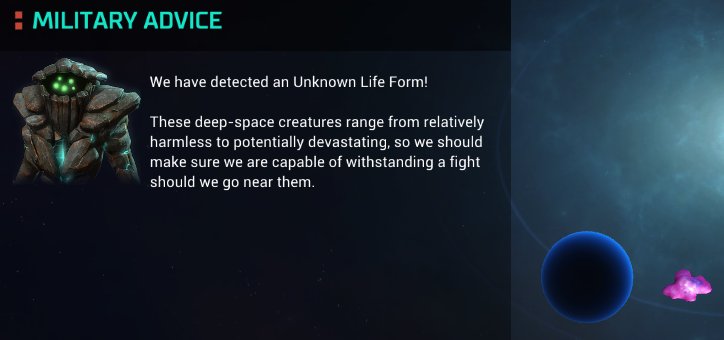
Starfaring Races: Eventually you will meet the other races. When contact is made, the emperor of that race will make themselves known. Interactions with your fellow galactic occupants can then be accessed through the Diplomacy screen. While you may be able to continue exploring your neighbor’s territory if you wish, keep in mind that races can be fickle. You could find your ships, or even colonies, trapped behind enemy lines to be destroyed or seized.
Obstacles to Exploration
The galaxy is free for you to roam—until you run into another advanced race. The other starfaring races may block entrance into their territory by placing ships on guard duty or by building battle stations. If you run into this situation, only three options are open to you: destroy the blocking forces (which will lead to war), negotiate an open border treaty, or leave. If you succeed in obtaining an open border treaty, be careful; when the treaty lapses or if it is cancelled by either side, any of your ships within the other race’s territory may be trapped there. Also remember that, while such a treaty is in force, the other race will have full access to your empire as well.
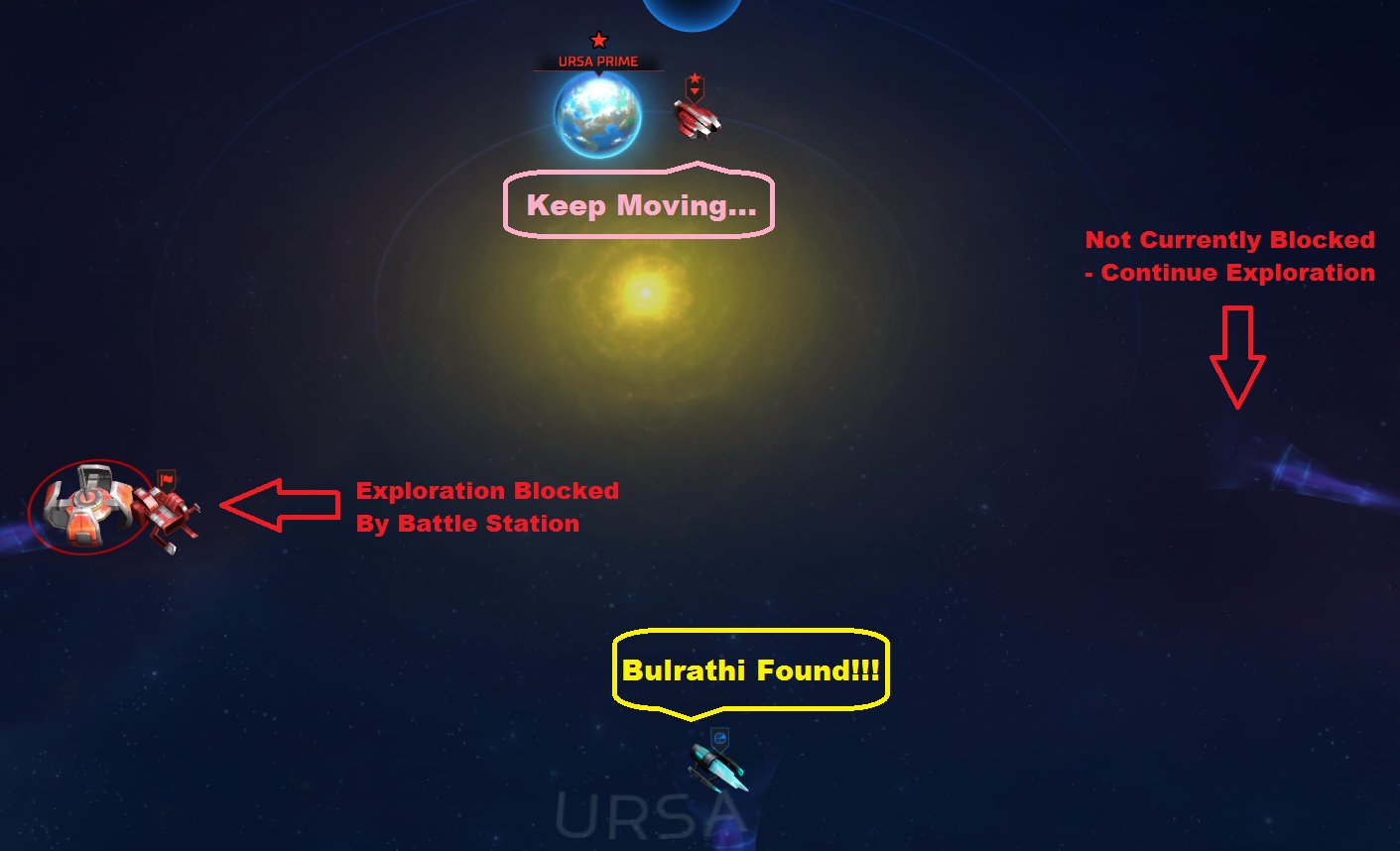
Disclaimer: This article is based on a "work-in-progress" build of Master of Orion and the information and screenshots included are subject to change.